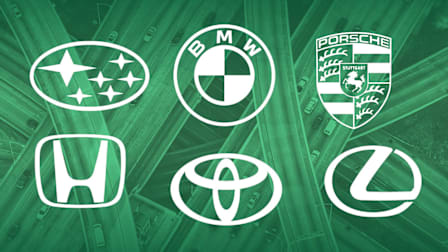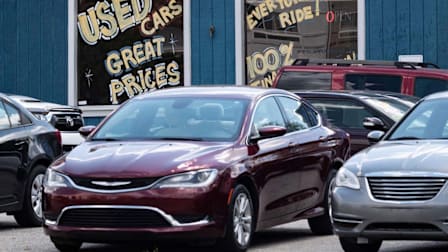What Happens When You Pull an Electric Parking Brake While Driving?
This replacement for the manual parking brake is more effective than you think

The manual parking brake is going the way of hand-cranked windows, ashtrays, and using a key to start a car—replaced by a small switch you can activate with just the tip of your finger. But is an electric parking brake capable of bringing your car to a complete stop the way a manual hand brake can? To find out, Consumer Reports’ technicians took several cars out on the test track to see what happens when a driver pulls the electronic parking brake while driving.
A total of nine cars, SUVs, pickups, and EVs were tested at 5 mph, 20 mph, and 60 mph in a straight line and in turns. They were also evaluated in dry and wet surface conditions.
“We found that the electronic parking brake does stop the vehicle,” says Mike Crossen, Consumer Reports’ auto technician. “When the parking brake engages, it can best be described as a noisy stop. The overall experience falls somewhere between a panic stop and normal braking.”
Quiz Maker - powered by Riddle
More Car Questions Answered
• Do New Cars Still Require a Break-In Period?
• What Is a Reasonable Life Span for a Modern Car?
• What Happens If You Turn Off Your Car While Driving?
• How Accurate Are Distance-to-Empty Calculators in Modern Cars?
• Can You Buy a Car Directly From an Automaker to Avoid a Dealer Markup?



















